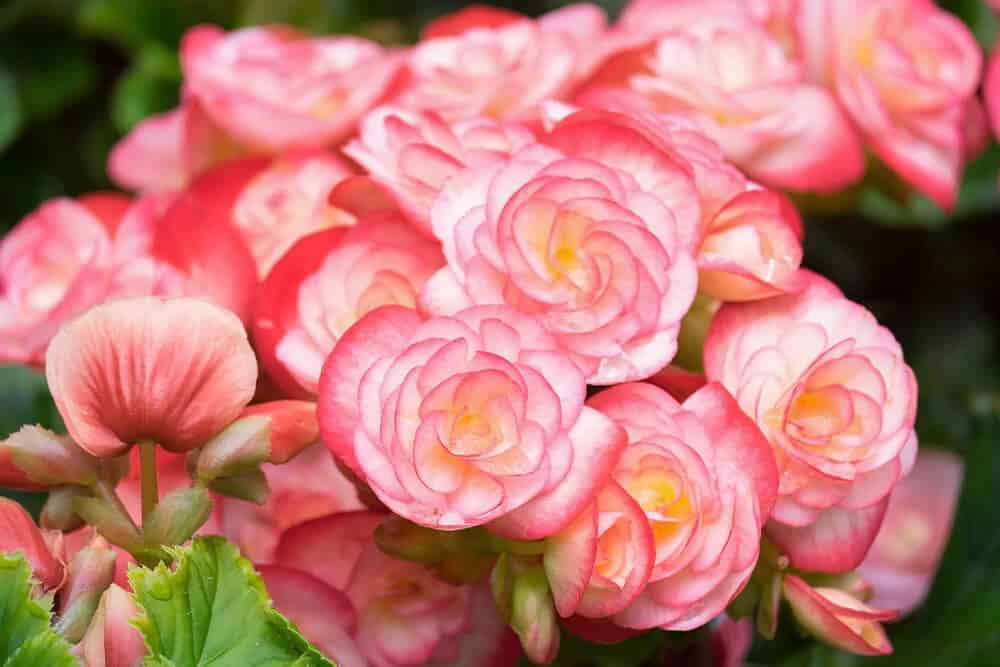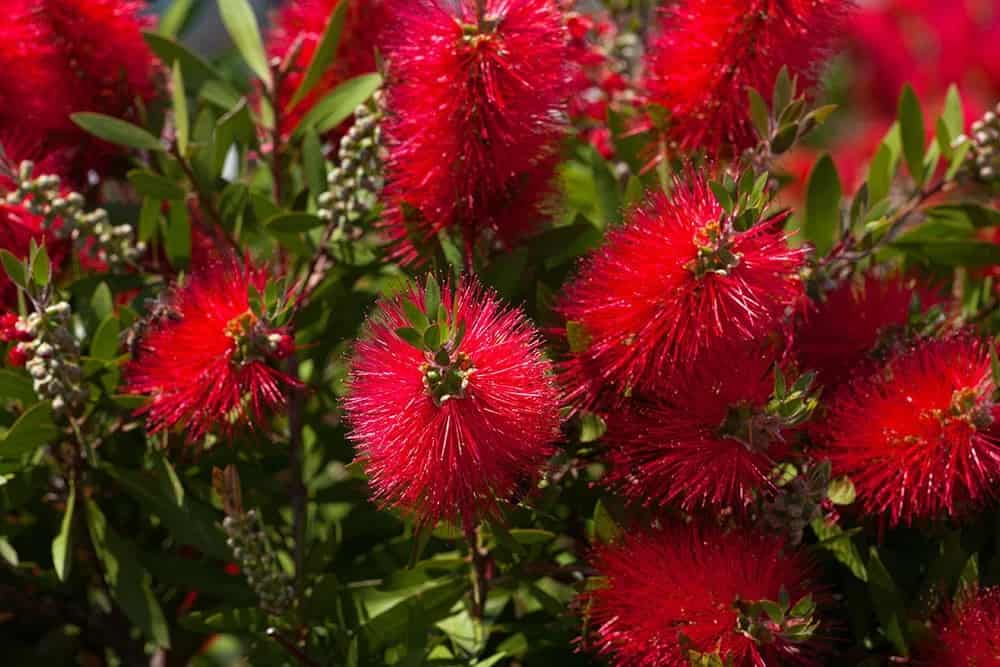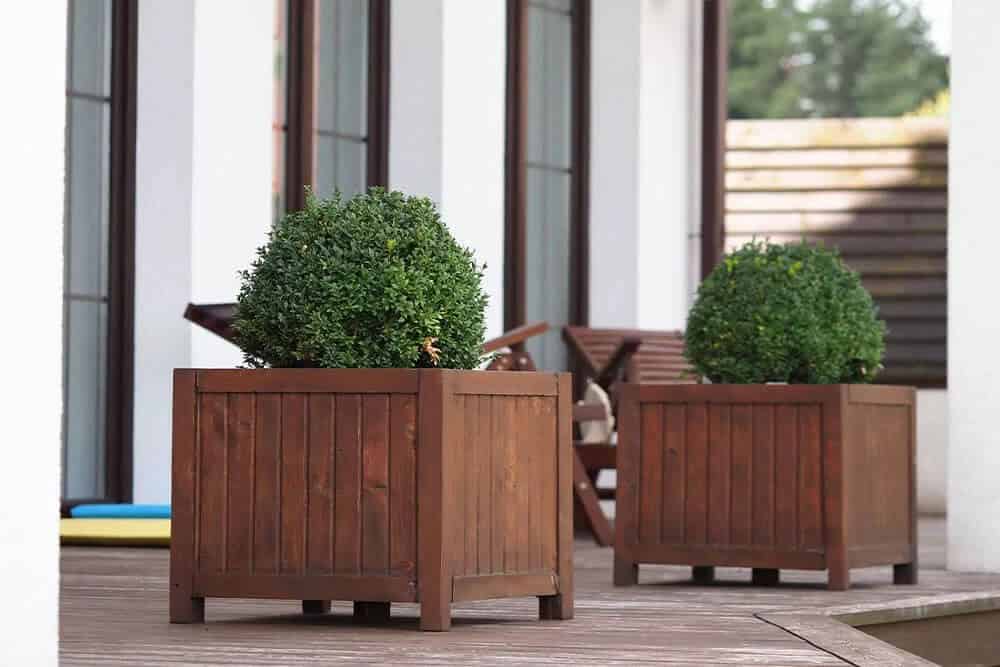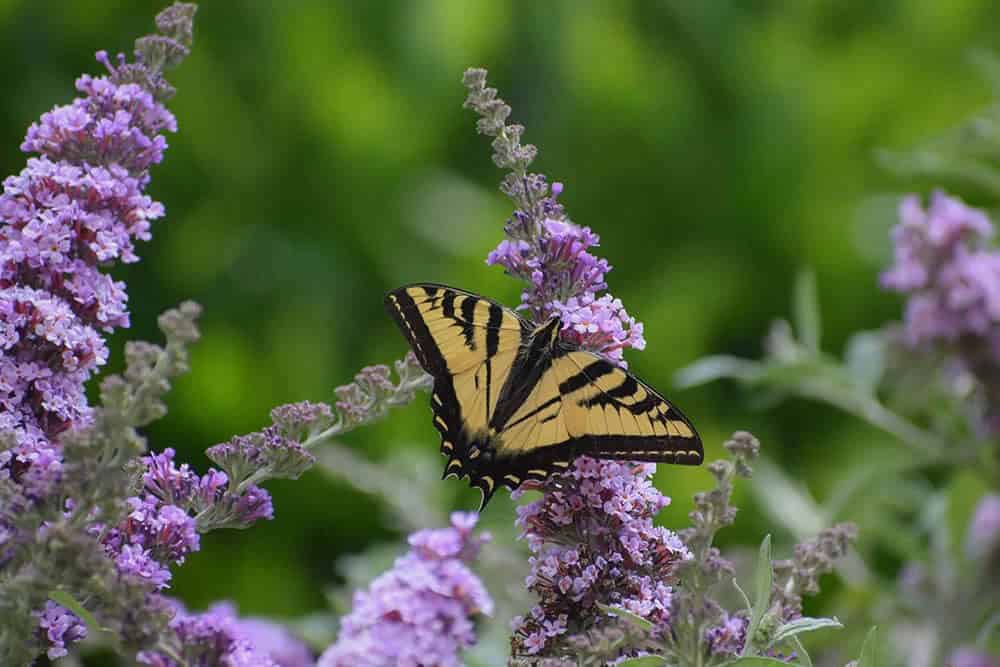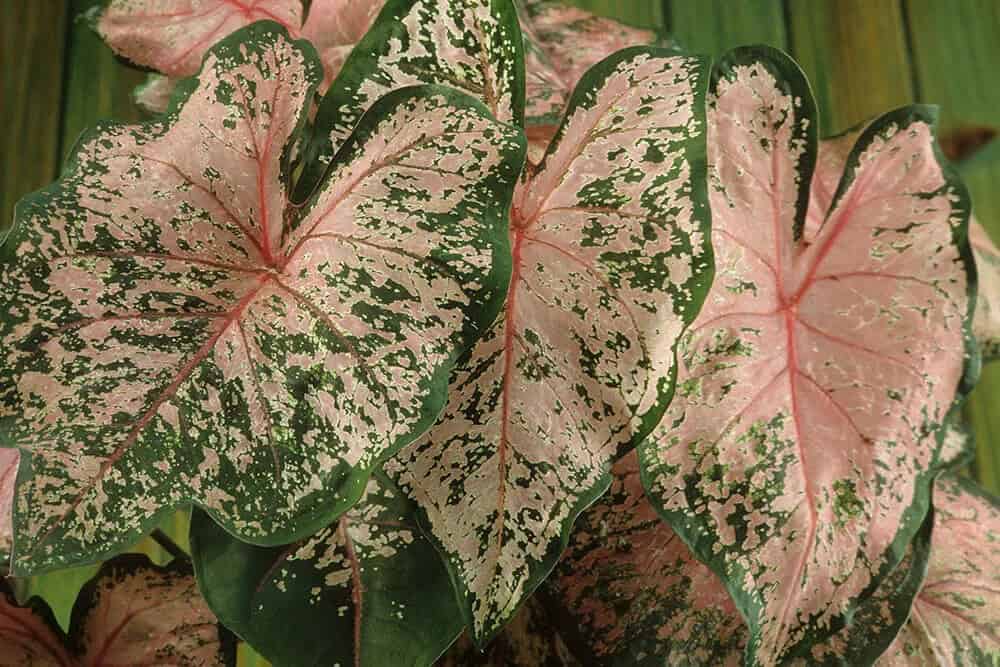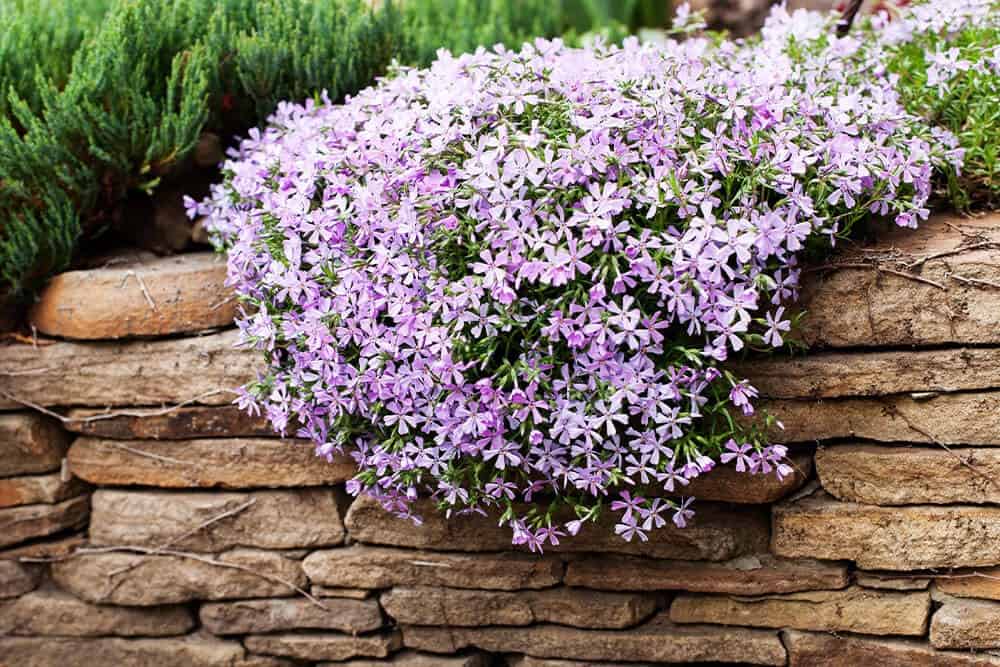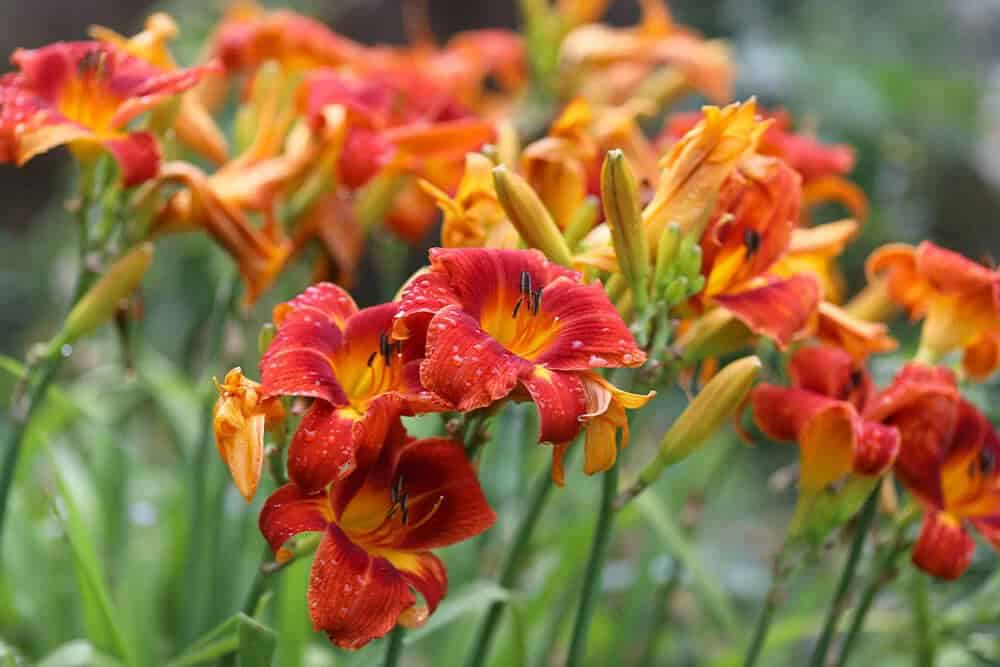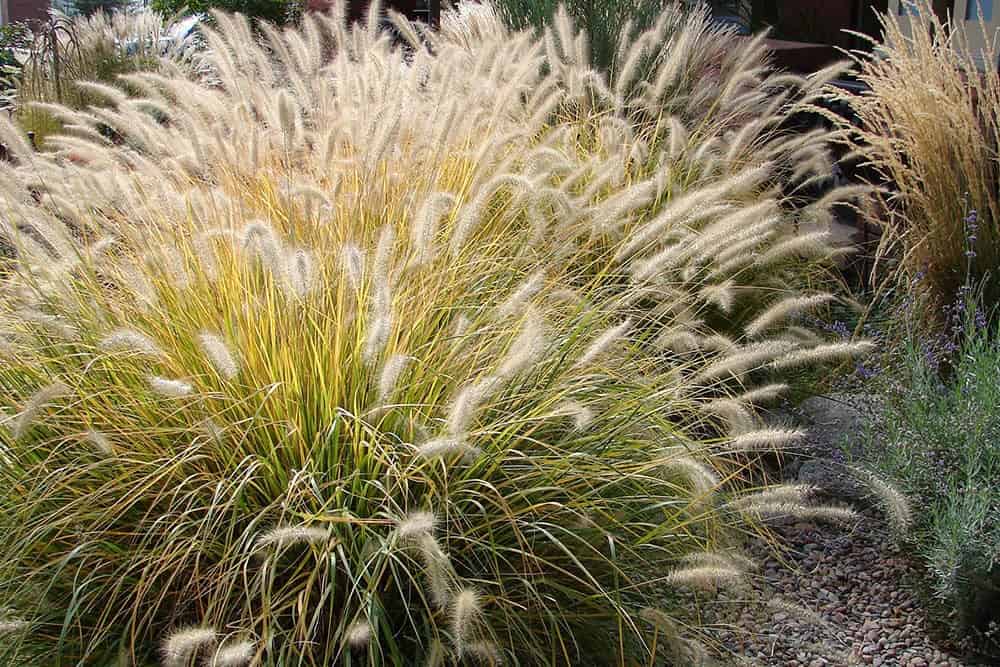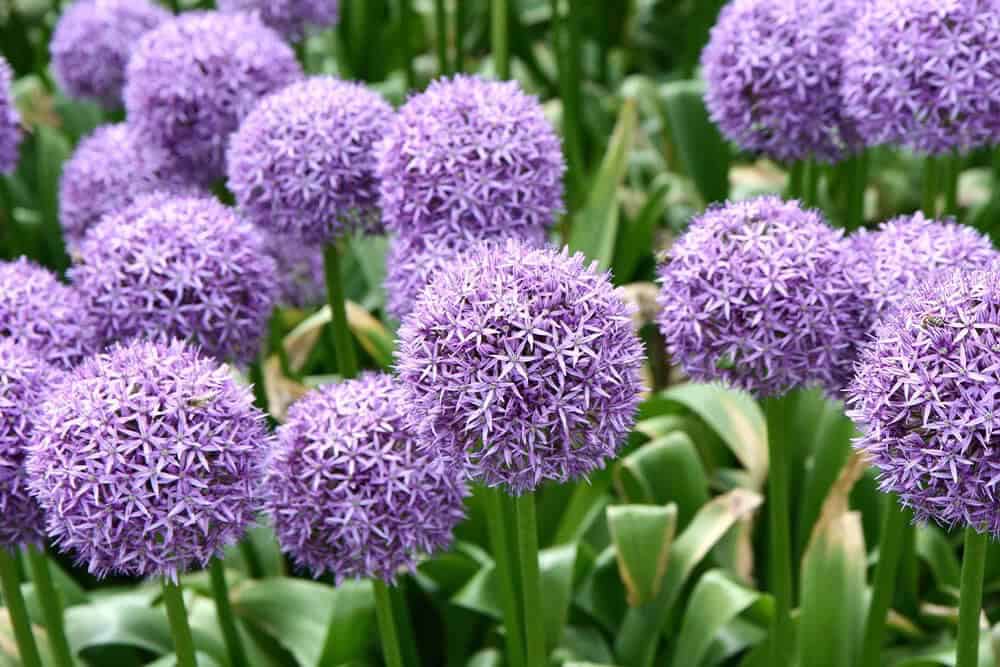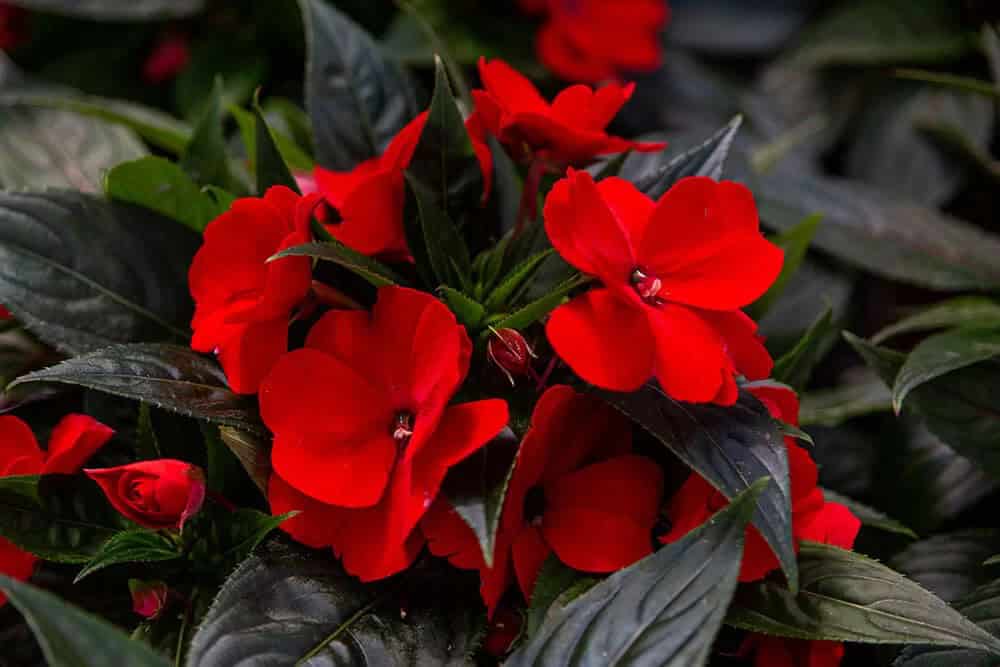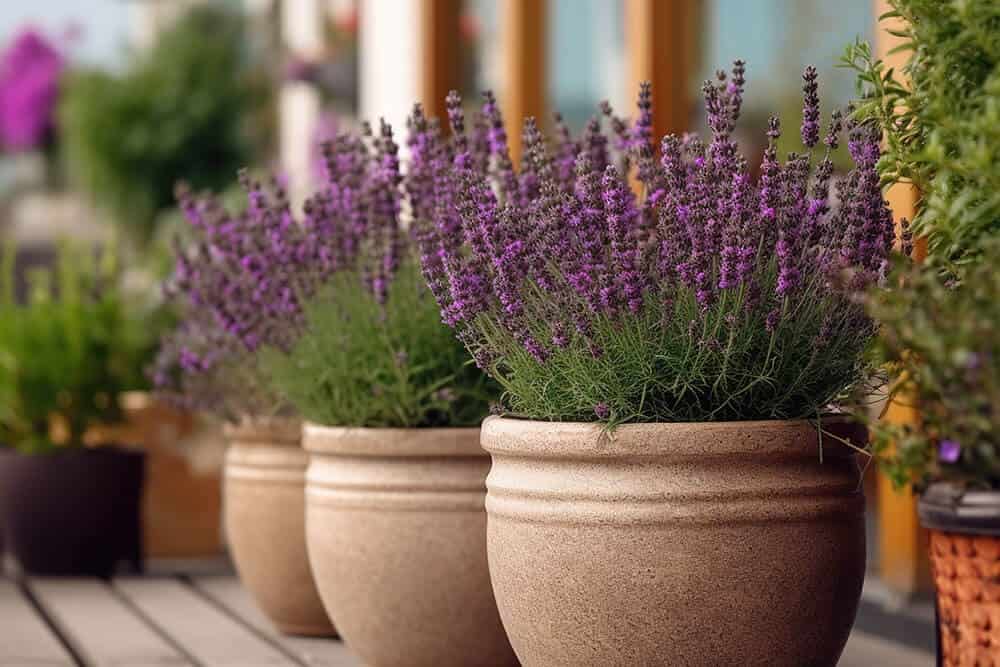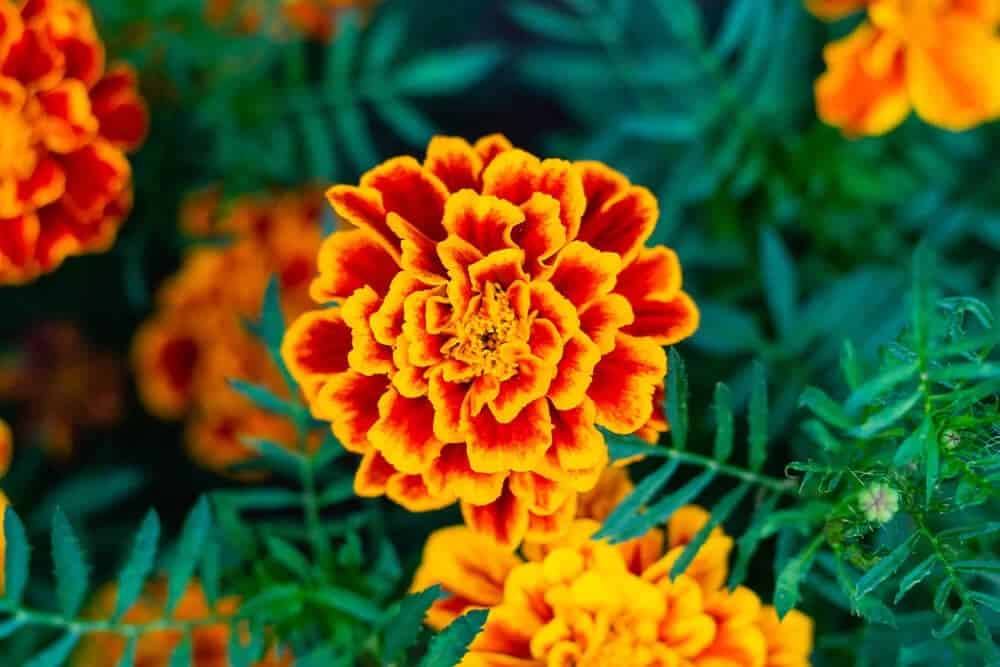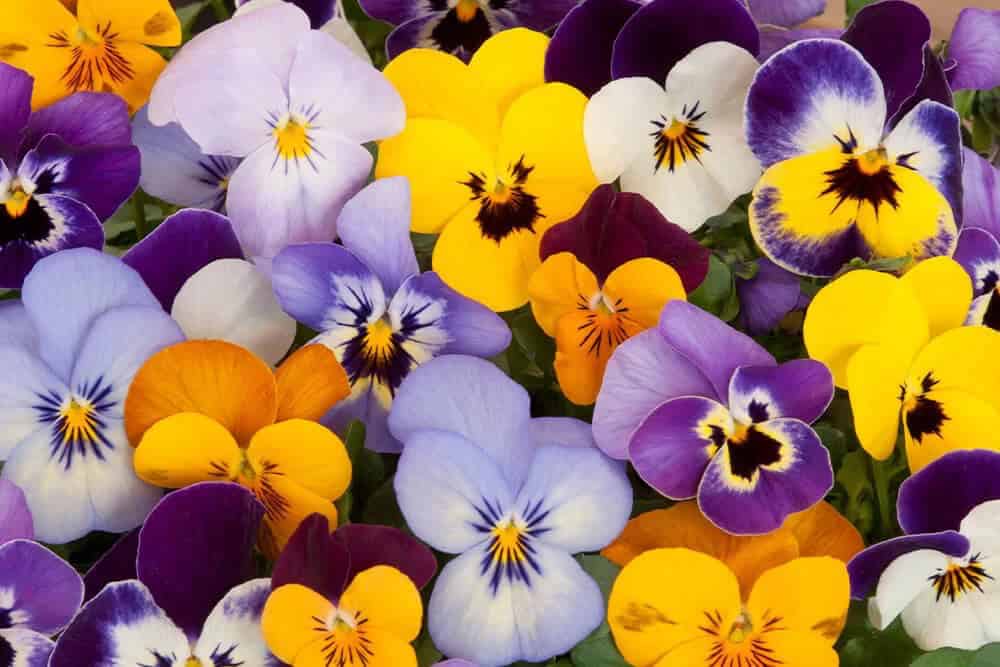Incorporating plants near your front door is an effective way to enhance the visual appeal of your home’s exterior. However, not all plants are suitable for this area. To help you achieve a welcoming and enchanting façade, we’ve compiled a list of top front door plants that can boost your home’s curb appeal. These plants come in various species, each with its unique set of requirements and ornamental features.
While the specifics will be discussed shortly, it’s essential to recognize a few key takeaways upfront:
Key Takeaways
Boosting your property’s curb appeal can be as simple as adding some well-chosen front door plants. Since these areas often present limited growing space, it’s no surprise that many of the most effective options are compact in size. Most front-door flora takes residence in containers, where they can thrive and add a pop of color to your exterior design.
The vibrant blooms of front-door plants are designed to catch the eye from afar, making them an excellent way to introduce some personality to your property’s facade. Interestingly, many of these plant species are perennials or woody types, while others are annuals – offering a range of options for every climate and lifestyle.
15 Inviting Front Door Plants That Will Make You Feel at Home
Begonia (Begonia)
Begonias are a staple in many American gardens, boasting vibrant flowers and unique foliage. What’s fascinating is that the plant’s lifespan depends on your geographical location. In regions with a hardiness zone of 8 or higher, begonias can thrive year-round as perennials. However, for those living in colder areas, these lovely blooms are best enjoyed as annuals. Regardless of how long they’re around, begonias consistently impress with their colorful displays and striking leaf patterns.
Bottlebrush (Fothergilla gardenii)
The bottlebrush shrub is another compact species that thrives in smaller spaces. Typically, it grows to be around 6 feet tall or less, making it an ideal choice for containers near your front door. Its petite size belies its striking beauty, as the flowers boast vibrant hues of white and red. What’s more, the texture of these blooms is truly exceptional – it’s what inspired the plant’s distinctive common name.
The bottlebrush shrub’s charm lies not only in its colors but also in its unique characteristics, making it a valuable addition to any garden or outdoor space.
Boxwood (Buxus)
While some gardeners rely on flowering plants to add curb appeal to their homes, others find that the ornamental value of foliage and growth habit alone is enough to impress. One excellent example of this is the boxwood shrub, which boasts broad evergreen leaves that are often a vibrant green. But what truly sets boxwoods apart is their remarkable responsiveness to trimming and shearing.
With this species, you can create a wide range of shapes and designs for your front door, from traditional to whimsical. Though boxwoods may not produce showy flowers, the visual interest they provide through their carefully crafted forms makes them well worth planting.
Butterfly Bush (Buddleja davidii)
When designing the front door area, it’s essential to recognize that this space serves a dual purpose: welcoming guests and providing habitat for native pollinator species. While visitors are a given, it’s easy to overlook the importance of attracting butterflies and other beneficial insects. The butterfly bush, in particular, is known for its ability to draw in elegant butterflies during its blooming period. However, not all varieties of this plant are created equal.
Some butterfly bushes can be invasive, so be sure to choose a non-spreading variety that’s been bred specifically for this purpose.
Caladium (Caladium bicolor)
While foliage is often associated with providing lush, consistent textures, it can also offer a kaleidoscope of colors. A prime example of this versatility is the caladium plant. Its large, elephant-ear-shaped leaves typically display a striking combination of white, pink, red, and green hues, making for an eye-catching visual display that’s perfect for adding a bold, tropical touch to your front door area or even growing indoors.
Creeping Phlox (Phlox subulata)
As spring awakens, creeping phlox becomes one of the most striking flowering plants, its vibrant blooms blanketing the ground with a kaleidoscope of colors – white, pink, and purple hues that seem to stretch on forever. What sets it apart from other showstopping specimens is its ability to sprawl across the terrain, creating a lush tapestry of color that transforms your garden into a sea of beauty.
While many enthusiasts employ creeping phlox as a ground cover for larger planting beds, this versatile plant also thrives in containers, making it an ideal choice for those seeking a pop of springtime vibrancy at their front door.
Daylily (Hemerocallis)
Daylilies are a staple in residential landscape design, boasting an array of advantages that make them a popular choice among homeowners. One major benefit is their low-maintenance nature – they can thrive without requiring excessive care or attention. Furthermore, daylilies are renowned for their striking beauty, courtesy of the large, showy flowers that adorn long stems.
This inherent charm has led to the development of numerous cultivated varieties, ensuring there’s a perfect type of daylily to suit your front door growing area.
Fountain Grass (Pennisetum alopecuroides ‘Hameln’)
Pennisetum alopecuroides ‘Hameln’ stands out among other plants claiming the name fountain grass. This variety forms compact clumps, reaching up to two feet in height and width. Its petite stature makes it an ideal choice for a moderately sized container on your front door, where it can thrive. One of its most notable features is its prolonged bloom period, during which it produces numerous spike-shaped flower clusters that are often a warm tan or off-white hue.
The texture of these clusters is particularly unique, making them a standout feature.
Geranium (Pelargonium)
Geraniums are a staple in many gardens due to their vibrant flower clusters and attractive foliage. These annuals thrive in containers, making them a popular choice for gardeners. One of the key factors contributing to their popularity is the depth of color found in their flowers. Additionally, geraniums have leaves with frilly margins that add texture and complement the blooms nicely. For an added touch, consider growing geraniums in hanging baskets and suspending them from your front porch.
This can greatly enhance the aesthetic appeal of your entryway, making it a welcoming sight for visitors.
Giant Allium (Allium)
The moment you lay eyes on a majestic giant allium plant, its striking appearance is forever etched in memory. The distinctive shape of this perennial flowering plant is characterized by a sturdy, green main stem that rises high and proud. Atop this vertical pillar rests a magnificent sphere of flowers, each one boasting a captivating purple hue.
This arresting growth habit makes the giant allium an excellent choice for drawing attention to your front door area, ensuring it will be the first thing your guests notice – and won’t soon forget.
Impatiens (Impatiens walleriana)
When it comes to flowering plant options for front porches with partial or full shade, impatiens stands out as a top choice. This annual species thrives in conditions that are less than ideal for many other blooms, producing vibrant flowers in shades of pink and beyond. Although they don’t require direct sunlight, impatiens still manage to put on a showy display. In fact, when grown in hanging baskets, their bright colors really pop, making them a stunning addition to any shaded porch.
Lavender (Lavandula angustifolia)
For many people, the concept of home extends beyond familiar visual cues to encompass comforting aromas as well. If you’re looking to infuse your entryway with a distinct scent, lavender makes an excellent choice for your front door plant. Not only does it emit a pleasing fragrance, but its beauty is equally noteworthy.
Lavender flowers cluster together in elongated arrangements, showcasing their vibrant purple hue and providing a tactile experience that’s even more striking when the breeze catches them, creating a sense of movement and texture.
Marigold (Tagetes)
Marigolds boast several advantages that make them an ideal choice for growing areas near the front door. One notable feature is their compact size, allowing them to thrive in containers of various sizes. In fact, you may even have enough space to grow multiple companion plants alongside your marigolds. Additionally, the vibrant blooms of these annuals are truly unmatched in terms of color intensity.
Each year, as they reach their peak bloom, marigolds will adorn your front door with a kaleidoscope of warm hues, including radiant shades of yellow, orange, and gold.
Pansy (Viola × wittrockiana)
Pansies are another popular annual plant that can thrive in even the smallest of spaces. Reaching only a few inches in height, they’re perfect for pots or containers of all sizes. One of their most notable features is the vibrant, multi-colored flowers that bloom throughout much of the growing season. But what really sets pansies apart is their remarkable longevity – with proper care, they can remain in flower for weeks on end, providing a constant display of colorful beauty.
Zinnia (Zinnia elegans)
Imagine transforming your ideal font door garden into a vibrant oasis with a single species – yes, it’s possible! Zinnias are the ultimate showstoppers, boasting circular flowers that come in an astonishing array of colors, including orange, pink, yellow, purple, and more. With such versatility, you can curate a stunning display to brighten up your front door.
Simply select the hues that resonate with you, and soon enough, you’ll be able to fill a container with a kaleidoscope of zinnias that will leave passersby in awe.
As you explore the wonders of front-door plants, you’re probably eager to learn more about this captivating group. Fortunately, we’ve addressed some of the most frequently asked questions about these incredible plants, which can be found below.
Dive in and uncover the secrets behind creating a truly unforgettable front-door display.
Frequently Asked Questions About Front Door Plants
What Plants Do Best on a Porch?
To ensure the perfect front porch plants, it’s essential to consider the unique conditions and environmental factors present at your location. Each case is different, so taking the time to understand the specific growing conditions will allow you to select plants that not only survive but truly flourish. Furthermore, recognizing the amount of space available on your porch is crucial, as you’ll want to choose a plant with a mature size that can comfortably fit within its designated growing area.
What is the Best Plant for a Covered Porch?
When cultivating a garden on a covered porch, it’s crucial to consider the level of sunlight your plants will receive. The reduced sun exposure in these areas makes it more suitable for plants that thrive in partial shade or full shade conditions. Conversely, you’ll need to compensate for the lack of rainfall by providing regular watering sessions. By taking these factors into account, you can create a thriving garden environment on your covered porch.
What Plants Are Best for Screened in Porch?
When selecting plants for a screened-in porch, it’s essential to prioritize those that thrive in partial shade or full shade, rather than those demanding direct sunlight. This is because the enclosed nature of a screened porch limits natural light, making it crucial to choose species that can adapt to these conditions. Furthermore, opting for compact, container-friendly plants ensures they won’t overwhelm the space.
By considering these factors, you can create a lush and thriving environment on your screened-in porch.
What Plants Can I Put in Pots Outside?
While most plants can thrive in containers when given the right space, some may still grow too large for their pots over time. As plants mature and expand, their roots can become constricted if the container is too small, leading to root-bound conditions that can ultimately be fatal. It’s not uncommon for plants to outgrow their containers eventually, requiring a transplant to ensure they continue to receive the space and nutrients they need.
Plants that respond well to transplantation are ideal in such situations, allowing you to gently relocate them to a larger container where they can flourish.
How Do I Choose a Front Porch Planter?
When selecting a front porch planter, several key factors come into play. Functionally, the planter must offer ample space for plant growth and efficient drainage to prevent waterlogged soil. Aesthetically, it should harmonize with your home’s exterior and the plants it will hold. By considering both practicality and visual appeal, you can find a front porch planter that meets your unique needs and enhances your outdoor space.
15 Fascinating Front Door Plants That Can Make Your House That Much More Beautiful
The exterior of a home can be significantly elevated by the presence of plants. One way to achieve this is by incorporating front-door plants into your landscaping. The options are vast, and our list showcases some of the most impressive choices for front-door planting. Whether you’re looking to enhance the curb appeal of your home or simply learn more about plants that thrive in these areas, this information provides a comprehensive guide.
